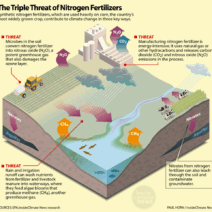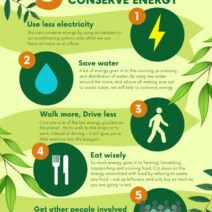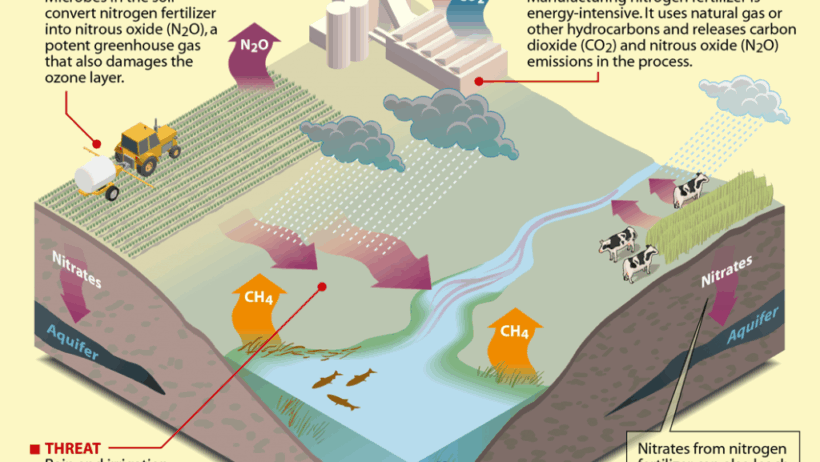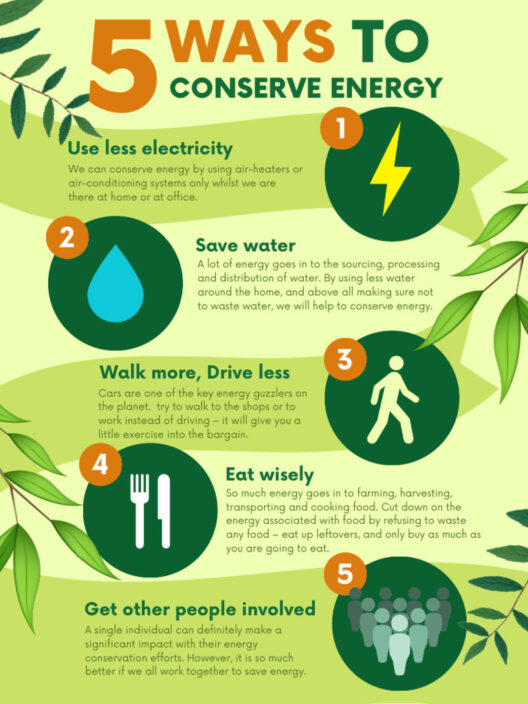As we wander through the vibrant fields of agriculture, one might ponder: How does the very foundation of our food system contribute to the insidious menace of global warming? The answer lies predominantly in the use of chemical fertilizers and agricultural practices that, while boosting crop yields, yield irreversible consequences for our planet’s climate. This exploration delves into the intricate relationship between chemical fertilizers, agricultural activities, and their collective impact on global warming.
To understand the phenomenon, we must first unravel the composition of chemical fertilizers. These synthetic concoctions, primarily made up of nitrogen, phosphorus, and potassium, are designed to optimize plant growth. However, their application is not without repercussions. The very nitrogen that promotes verdant growth also plays a pivotal role in the atmospheric composition, effectively becoming a proponent of global warming when used excessively.
When farmers apply nitrogen-rich fertilizers, a significant portion of that nitrogen is transformed into nitrous oxide (N₂O), a greenhouse gas approximately 298 times more potent than carbon dioxide in terms of its heat-trapping ability over a century. This transformation occurs through microbial processes in the soil, exacerbated by factors such as moisture, temperature, and soil composition. The consequence? Increased concentrations of nitrous oxide contribute substantially to the greenhouse effect, raising global temperatures.
But why do farmers continue to rely on these chemical inputs? The answer lies in food production demands. As the world’s population swells, the pressure to produce more food intensifies. Chemical fertilizers serve as a crutch, enabling farmers to achieve higher yields on shrinking arable land. Yet, this productivity comes at a staggering environmental cost. The playful question arises: Can we sustain our food demands without compromising the very atmosphere we depend on for life?
The challenge presented is multi-faceted. First, consider the issue of soil health. Continuous reliance on chemical fertilizers tends to deplete soil biodiversity, undermining its natural fertility. Healthy soils are teeming with beneficial microorganisms that play a crucial role in nutrient cycling and plant health. The paradox looms: in pursuit of immediate agricultural success, farmers may inadvertently diminish the long-term viability of their farming systems.
Another troubling consequence of chemical fertilizers is the phenomenon of runoff. Excess fertilizer not absorbed by crops can accumulate in waterways, leading to nutrient pollution. This creates harmful algal blooms, which deplete oxygen in aquatic environments and result in dead zones where marine life cannot survive. This not only disrupts ecosystems but also compromises local fishing industries, posing an economic threat to communities reliant on these sources of livelihood.
The plight of developing nations is particularly pressing. Smallholder farmers often lack the resources to adopt sustainable practices or invest in organic alternatives. As global markets dictate agricultural practices, the dependence on chemical fertilizers becomes even more entrenched. Can we imagine a world where farmers are empowered to cultivate with techniques that enhance soil health and mitigate greenhouse gas emissions?
Transitioning from chemical fertilizers to a more sustainable agricultural model is a daunting yet essential endeavor. Agroecology, for instance, offers promising pathways by promoting the use of cover crops, crop rotation, and organic amendments. These practices enhance soil structure, boost carbon sequestration, and reduce reliance on harmful inputs. Yet, education and access to resources remain critical barriers. Continued advocacy for policies that support sustainable practices is vital to ushering in this transformation.
Moreover, the food industry plays an indispensable role in this equation. By harnessing consumer power, individuals can drive demand for organic and sustainably farmed produce. As the chords of supply and demand resound, farmers may find the incentive to reassess their agricultural practices and adopt methods that champion ecological balance.
Yet, skepticism lingers. How can we ensure a balance between productivity and environmental responsibility? The integration of technology might hold keys to the conundrum. Precision agriculture harnesses data analytics to optimize fertilizer application, ensuring that plants receive what they require without excess. This minimization not only lessens greenhouse gas emissions but also curtails the economic burden placed on farmers through the excessive use of fertilizers.
Additionally, the role of governmental policies cannot be overstated. Implementing regulations that limit the use of chemical fertilizers and promote sustainable practices can catalyze change on a larger scale. Subsidies for organic farming or practices that enhance soil health can shift economic incentives in favor of environmental stewardship. These measures underscore the societal commitment to combating climate change collaboratively.
In conclusion, while chemical fertilizers have undoubtedly revolutionized food production, their contribution to global warming cannot be ignored. The challenge invites us to scrutinize our agricultural choices and explore alternative practices that nourish not only crops but also our planet. The path ahead requires a collective reimagining of our connection to food, agriculture, and the environment. Will we rise to the challenge and cultivate a sustainable future? The answer lies in our hands, beckoning each of us to become stewards of the Earth.






